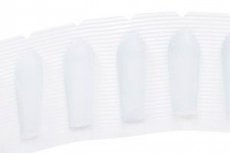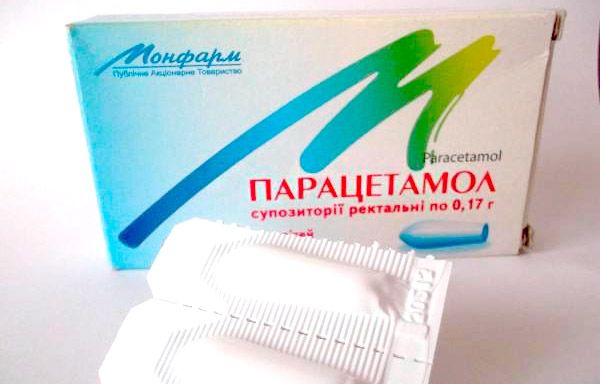Medical expert of the article
New publications
Preparations
Anesthetic suppository with monthly
Last reviewed: 23.04.2024

All iLive content is medically reviewed or fact checked to ensure as much factual accuracy as possible.
We have strict sourcing guidelines and only link to reputable media sites, academic research institutions and, whenever possible, medically peer reviewed studies. Note that the numbers in parentheses ([1], [2], etc.) are clickable links to these studies.
If you feel that any of our content is inaccurate, out-of-date, or otherwise questionable, please select it and press Ctrl + Enter.

Indications of the analgesic suppositories during menstruation
Usually, these drugs are recommended to use for symptomatic treatment of inflammatory diseases of the genitourinary system. Thanks to the combined composition, they are able to cope not only with unpleasant pain sensations, but also with inflammation, so they are often appointed by gynecologists to reduce pain during menstruation.

Release form
In vaginal suppositories with an analgesic effect, the main component is always the analgesic. For example, recently popular are:
Efferalgan. An analgesic, whose active ingredient is paracetamol. It has an anti-inflammatory and antipyretic effect. It is intended for the treatment of pain syndromes of mild and moderate severity (headaches, myalgia, toothache, pain with menstruation, neuralgia).
Dosage for adult patients is 500 mg, with the suppository can be used no more than four times a day. Therapy lasts from five to seven days. If the pain does not stop, you should consult a doctor.
Do not use the drug with paracetamol intolerance. The effect of this substance on the development of the fetus has not been studied, but during pregnancy and breastfeeding it is necessary to use this remedy with caution.
The main side effects: hepatotoxic effect (with prolonged admission), leukopenia, neutropenia, allergies.
Paracetamol. Cream or white suppositories, active ingredient of which is paracetamol. They differ antipyretic, anti-inflammatory, analgesic effect.

The drug is taken up to five times a day (one candle). It is very important to use the suppository at the same interval (four hours). It is not recommended to take more than five days to get an analgesic effect. If you did not get the desired result, you need to see a doctor.
The drug should be taken with extreme caution in diseases of the kidneys and liver, as well as with intolerance to paracetamol. With frequent use of suppositories, side effects may occur: allergies (urticaria, pruritus, rashes on the skin), thrombocytopenia or anemia.
Tsefekon D. Active active ingredient of these suppositories is paracetamol, which has an excellent antipyretic and analgesic effect. It can be used to reduce temperature, relieve pain in headache, neuralgia, toothache, and menstruation.

The dosage of the drug is administered individually. It depends on the strength of the symptoms. Usually the agent is used up to three times a day for 500 mg. Intervals between receptions should be up to six hours.
The drug is not recommended for use with paracetamol intolerance and liver diseases. Among the main side effects are: nausea, vomiting, allergy, thrombocytopenia, anemia.
Rectal analgesic suppository with monthly
With severe pain during menstruation, it is the suppository that allows you to get a quick and fairly persistent analgesic effect. Usually, such suppositories are administered rectally and begin to act after 15-30 minutes after use.
Tylenol. Despite the fact that these suppositories are usually prescribed to reduce heat (at elevated temperature), they can also be used during menstruation. The active ingredient of the suppository is paracetamol.
Rectal suppositories are recommended not to be used more than four times a day in a dosage of 500 mg. If after three to five days of relief did not come, it is worth stopping the reception and see a doctor.
The drug is contraindicated if you have an allergy to paracetamol, as well as newborn children. With caution, use the suppository for kidney and liver diseases, viral hepatitis, alcoholism, diabetes. Also, do not take the drug during pregnancy.
When using Tylenol suppositories, the effectiveness of the agents that are designed to excrete uric acid decreases. The most known side effects are: anemia, erythema, headache, nausea, vomiting, cyanosis, allergies.
Akamol-Teva. Active active ingredient of the drug is paracetamol, as in most similar analgesic rectal suppositories. Used to treat mild to moderate pain (headache, toothache, miralgia, fever, pain with menstruation).
The dosage is not more than 500 mg. In this case, the drug should not be used more than four times a day. The duration of therapy is five to seven days. If there is no relief during this period of time, the treatment is discontinued.
Suppositories should not be used with intolerance to paracetamol, in early childhood, with kidney disease, alcoholism, diabetes, during breastfeeding. The main side effects from taking the drug are: dizziness, nausea, vomiting, allergies, swelling, irritation of the rectum.
 [7]
[7]
Pharmacodynamics
Consider the pharmacodynamics and pharmacokinetics of analgesic suppositories for menstruation with the example of the known drug Paracetamol.
This drug is a non-narcotic analgesic, the action of which is based on the blockage in the central nervous system of COX 2 and COX 1, due to the effect on the centers of thermoregulation and pain. The drug does not act negatively on the mucous membranes of the rectum or gastrointestinal tract (depending on the form of release) and on water-salt metabolism in the body.
Pharmacokinetics
Differs quite a high absorption. When breastfeeding, it is worth noting that at least 1% of the substance enters the breast milk. The metabolism of the drug occurs in the liver. Paracetamol is excreted through the kidneys in the form of metabolites. At the same time, only 3% of the substance is removed in an unchanged form.
Dosing and administration
The effect of suppositories during menstruation is more effective. Especially often they are used if the woman also manifests nausea, vomiting. Apply them, as a rule, twice a day, one candle. The intervals between the doses should be long enough. With strong pain, suppositories are used up to 4 times.
Contraindications
Suppositories with analgesic effect are forbidden to apply only in a few cases: with alcohol abuse, paracetamol intolerance and during infant feeding with milk. Also it is necessary to carefully calculate the dosage for diseases of the liver and kidneys, diabetes, blood diseases.
Side effects of the analgesic suppositories during menstruation
Side effects from taking rectal suppositories with analgesic effect are quite rare. Some patients develop an allergic reaction (swelling, redness, rashes, hives, itching). In such cases it is recommended to immediately stop treatment.
 [25]
[25]
Storage conditions
Suppositories must be stored in a dry place and protected from direct sunlight. The temperature should not exceed 15 degrees. After opening the package it is better to store it in the refrigerator for the convenience of using suppositories.
 [37]
[37]
Attention!
To simplify the perception of information, this instruction for use of the drug "Anesthetic suppository with monthly" translated and presented in a special form on the basis of the official instructions for medical use of the drug. Before use read the annotation that came directly to medicines.
Description provided for informational purposes and is not a guide to self-healing. The need for this drug, the purpose of the treatment regimen, methods and dose of the drug is determined solely by the attending physician. Self-medication is dangerous for your health.

